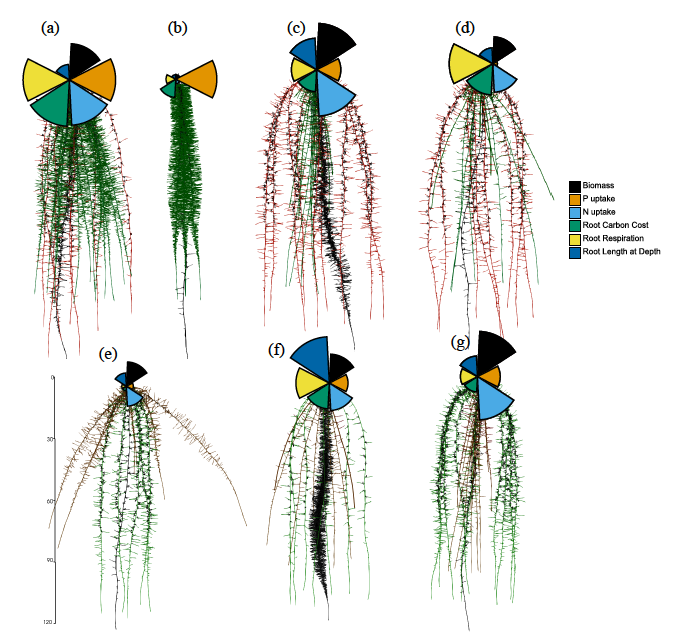Authors
Rangarajan H, D Hadka, P Reed, JP Lynch
Source
The Plant Journal, April 15 2022
Download Options
https://doi.org/10.1111/tpj.15774
Abstract
Summary
Root phenotypes are avenues to the development of crop cultivars with improved nutrient capture, which is an important goal for global agriculture. The fitness landscape of root phenotypes is highly complex and multidimensional. It is difficult to predict which combinations of traits (phene states) will create the best performing integrated phenotypes in various environments. Brute force methods to map the fitness landscape by simulating millions of phenotypes in multiple environments are computationally challenging. Evolutionary optimization algorithms may provide more efficient avenues to explore high dimensional domains such as the root phenotypic space. We coupled the three-dimensional functional structural plant model (FSPM), SimRoot, to the Borg Multi-Objective Optimization Algorithm (MOEA) and the evolutionary search over several generations facilitated the identification of optimal root phenotypes balancing trade-offs across nutrient uptake, biomass accumulation and root carbon costs in environments varying in nutrient availability. Our results show that several combinations of root phenes generate optimal integrated phenotypes where performance in one objective comes at the cost of reduced performance in one or more of the remaining objectives, and such combinations differed for mobile and non-mobile nutrients and for maize (a monocot) and bean (a dicot). FSPMs can be used with multi-objective optimization to identify optimal root phenotypes under various environments, including future climate scenarios, which will be useful in developing the more resilient, efficient crops urgently needed in global agriculture.
Significance Statement
Analyzing and understanding the complexity of the phenome is a grand challenge in biology. The fitness impacts of a specific trait or ‘phene state’ depends not only on the environment but also on other traits expressed in that organism. By linking a functional structural plant model to a multi-objective evolutionary algorithm, we are able to identify optimal root phenotypes in different nutrient scenarios. Our results demonstrate that this approach has utility in matching root phenotypes to their environments.


